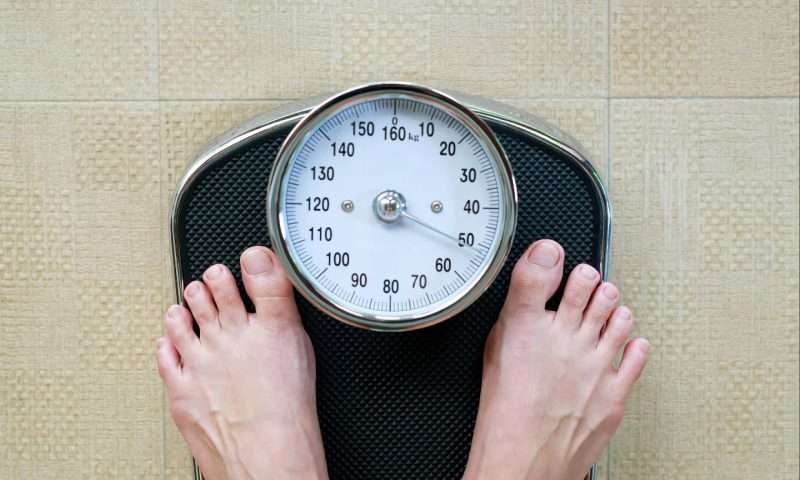It’s information overload. There is just so much out there about health and fitness and losing weight and gaining muscle and everything in between – from how to get it done in three minutes to following along with a 90-minute DVD seven days a week.
Let’s set the record straight and take some time out for busting fitness myths.

I can train my way through a bad diet. FICTION
The nutritional roadblock is usually the hardest one to overcome. Seriously. Your diet is about 80% of the equation. Simply put: if you eat junk, your body will end up being junk. This is why we need a sound approach to diet that incorporates the right nutrients and caloric intake. An approach that, coupled with a strong fitness plan, leads to long-term success. But, the fact of the matter remains: you can train all you want, but if the diet is not quality, the results will be less than satisfactory.
I don’t need any help to reach my goals. FICTION
Trying to drop some pounds before the holidays? After the holidays? Well, good luck if you are surrounded by constant temptations of junk food. Get a support network. Why do programs like Weight Watchers and Jenny Craig work? Hint: it ain’t some crazy algorithm for calorie control and it definitely isn’t the food, because that stuff is awful. These programs add a layer of accountability of having to answer to the points, to a group or to whomever is assigned to the social support group. Look, there’s probably someone else in your life that wants to hit the weights a little more. Hit them together. Or even challenge each other to a friendly wager. Here’s an idea: announce your fitness journey on the Dad Network Facebook Group and ask your fellow fathers for support and to hold you accountable. This type of involvement will keep you accountable and keep you hitting the gym and keep you from picking up that brownie. Having a support system is my No. 1 most important recommendation.
I need to stick with this workout in order to order to meet my goals. FICTION
I get it. No one likes change. We all like to hang out in our comfort zones. Well, truth is, we need to mix up our fitness routines (usually about every four weeks) in order to maximize our efforts. This doesn’t need to be some huge earth-shattering change here. Add more weight. Flip the order of your supersets. Attack a muscle group from a different angle. Simple tweaks like these can make just enough of a difference to kickstart your progress.
I can just hit the gym and figure it out as I go. FICTION
Now on the flip side of things is the idea that structure is not needed at all and you can just make up a workout as you go. Following a program has proven to be the most effective way to meet your fitness goals, whether that be gaining muscle or burning fat. And the most effective use of your time, too. Don’t be the clueless dude wandering around the weight rack trying to decide which exercise to start with. Get a program. Follow the program. And then, track your progress. When that progress slows, look into some of the aforementioned strategies to slightly mix things up before dropping a routine altogether. Focus on hitting a personal best every single workout. Go to war when you step foot in the gym. And win.
I need to train every day of the week to make sure I get in shape. FICTION
Quality over quantity, people. Who the hell would want to spend seven days a week in the gym, anyway? After a long day’s work at the office, you need to get some rest and relaxation. Well, after a week of punishing your body and muscles and joints in the gym, your body needs rest, too. Especially if you are dieting. Over-training and low-calorie diets go together like oil and water. Chances are that if you think adding more cardio and more weights and more sets and more reps is your answer to reach your goals … you’re probably buying into the first four myths and need to reevaluate. Instead of upping the time spent training, up the intensity and you’ll see that less can actually be more.
But after it’s all said and done, what does it mean to be “fit” anyway?
Great question. It’s different for everyone, obviously. But the one thing it’s not … is just one thing alone: weight. We watch too many shows like “Biggest Loser” as they glorify a drop in pounds as the end-all-be-all in fitness. Truth be told, there are many different methods for measurement we need to track.
And let’s be perfectly clear here: if you aren’t tracking your progress on a regular basis, you are not fully engaged towards reaching your goals. Weekly tracking is enough (no one should be stepping on the scale daily – your weight fluctuates as the week goes on). Pick one day a week, take a few minutes to see how you’ve progressed from the previous week, keep a journal of this progress and start hitting those goals.
As our battle of the bulge kicks into high gear, it’s about time we break down the best ways to keep track of our goals:
Weight – Yes, you should keep track of your weight. No, it shouldn’t be the only thing you measure. If you are strength training regularly (and everyone should be strength training regularly), you’ll build muscle. In it’s most simplistic of terms of the science here, muscle weighs more than fat. So, you could actually gain weight … but lose fat at the same time – especially if you are just starting out on a routine.
BMI – The second-most used option after weight. This one really annoys me. Long story short, BMI (or Body Mass Index) measures your height versus your weight. According to the scale, you should weigh a certain amount compared to how tall you are. There are a million and one free BMI calculators online. But, if you want to figure it out yourself, plug the numbers into this formula: BMI = Weight (kg) / (Height (m) x Height (m))
Then, see how you measure up according to the standard:
- Normal: 18.5 to 24.9
- Overweight: 25 to 29.9
- Obese: 30 and over
So, why don’t I like to use BMI? Because it does not take into account the muscle mass of the individual. Professional athletes that tend to carry much more muscle on their frames than the typical adult can also read on the obese scale when it comes to BMI. That’s just ridiculous.
Body Fat Percentage – My favorite method. Just as the title implies, it measures how much of your total body composition is made up of fat. For those men trying to go magazine cover lean, you’ll need to aim for about 10% or less; for women: about 18% or less – heads up that these figures vary greatly depending on the individual, but they are good ballpark numbers to use as benchmarks. The best method for checking this is to see a professional (personal trainer will do), as many so-called “devices” are just not accurate. If you must do it yourself, be sure to grab a professional body fat caliper.
Measuring body fat can be frustrating because there are so many potential inconsistencies. Unless you’re dropping $$$ for DEXA (one of the most accurate methods), you have to assume some level of variation. If you have an expert who is really good at using calipers – and yes, most people who use calipers don’t do it correctly – this is a good method.
Inches – Insert “size does count” joke here. Anyways. Take measurements each week and record them. Here are the areas you should measure each week:
- Neck
- Shoulders
- Chest
- Arm (at the bicep)
- Waist (around the navel)
- Hips (at the widest point)
- Thigh
- Calf
Photos – A picture really is worth a thousand words. It’s oftentimes difficult to see physical results when you look at the mirror every single day. That’s why you should take a good picture of yourself on at least a month-to-month basis. You’ll really start to notice the sudden changes in your body and build over the monthly intervals.
Quick tip: ensure good lighting with each photo and take pictures of your front, side and back to tell the whole story.
There are additional methods to employ, too. Resting heart rate is a great measure (athletic types will have a slower resting heart rate than their sedentary counterparts). Then there is the good ol’ fashion pant size test: if you are dropping pant sizes, chances are you are dropping body fat. It’s also a good idea to take pictures of yourself regularly to see how far you are progressing.
But, the bottom line is you’ll need to use a combination of the all of these methods in order to thoroughly track your progress. Just make sure you are tracking it. I promise you’ll eventually like what you see.
That said, the real key is consistently using the same form of measurement. If you’re consistent with what you use, even if not 100% accurate it’ll be easier for you to determine changes and progress.
This post originally appeared on DaddyMindTricks.com.










